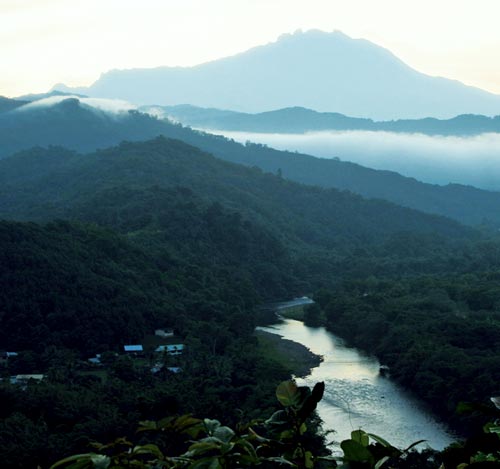



Buying land, improving amenities
June, 2017 in Issue 2 - 2017, Publication
Animal invasion
Although Kimansi was easier to develop than Tungud, we were to discover that our pioneering tribulations were not yet over. At the end of the 1965 monsoon, by which time we had planted over 1,200 acres on Kimansi, a huge herd of bearded-pigs migrated down from the jungles to the north.
They settled in the jungle on the borders of Tindakon and proceeded to wreak havoc. The pigs swiftly acquired a taste for oil palm, especially for the sweet central spears. They poured into the planted areas at dusk and every morning we found hundreds of trees destroyed.
Every local hunter in the district was out shooting them night after night. I suggested that the divisional managers should pay the locals a bounty for every pig shot. There was a slight temporary hitch when I found that David Marsh on Tindakon was checking the numbers by counting one pig’s head for every $10 paid out, whilst Bharpur on Rungus was insisting on the hunters producing a tail. It did not take our wily neighbours long to discover this golden opportunity for doubling their returns.
Over three months, well over 300 pigs were killed. The size of the herd was such that it seemed to make little impact on their numbers. I had seen plenty pig-damage on new plantings in Johore; however, I had never seen damage on this scale.
Ibrahim, our source of local knowledge, told us that every decade or two, bearded-pigs gathered in huge herds and made their way from the interior down through the Labuk Valley to the Sulu Sea. He thought that this instinct might have something to do with their need for salt, just as in the case of the migrating otters I had seen years earlier.
The herds having found a delicious new source of food in the shape of young oil palm, had no inclination to proceed further. The wire collars which kept out rats and porcupines were of no use against wild boars. Eventually we had to erect a 12-mile pig-proof fence at vast expense around the jungle boundary. It had to be patrolled nightly by hunters to check for break-ins.
After this, the pigs migrated to the Labuk delta, as Ibrahim had predicted. The last I saw of them was a few weeks later when, en route to Sandakan, I bumped into a small herd swimming across Labuk bay, at least a mile from the nearest shore.
A final census showed that we had lost 25,575 oil palm trees in Tindakon and 7,460 in Ulu. This was the equivalent of just over 600 acres of oil palm. Once we replaced the dead trees, we continued to make swift progress with the planting operations.
Need for a bridge
When we acquired Kimansi, our access to it was by means of a ferry across the Tungud River. As development proceeded, the ferry became inadequate to handle all the traffic. Plantations Group agreed with us that the properties must be linked by a bridge.
We enlisted the help of a civil engineering company, Steen Sehested. Their local representative was a Sabahan, Nasir Yeo, a young Chinese civil engineer who had got his qualifications and early training in the UK. He designed the bridge. It was about 300 feet long and had to be built well above the level of the highest known floods.
We put the bridge construction out to tender in Singapore, Kuala Lumpur and Hong Kong. As usual when it was found that it had to be built in the interior, in an area inaccessible by road, the tenders we received were absurdly high. The cheapest was over $2 million. We decided that we would build the bridge ourselves with Yeo acting as our on-site consultant.
The Unilever engineer, John MacDonald, who was to take charge of the construction of the new mill, was given, as his first job, the task of constructing the bridge. Nasir’s design had called for the piles to be driven to a depth of 30 feet below the bed of the river.
We hired a Chinese pile-driving expert from Hong Kong for this part of the operation. MacDonald then completed the steelwork and the concrete decking, using Kong Miew and his local building workers. When finished, the bridge had cost us just under $300,000.
Over the next few decades, Nasir’s design was frequently put to the test when the Tungud was in flood, and it withstood every one. I am sure that a hundred years from now, it will still be there, a monument to one of Sabah’s first civil engineers.